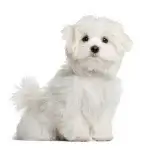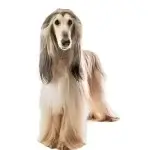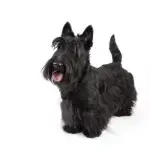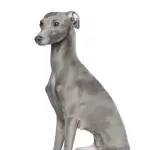Home / Compare Pet Insurance / Independent dog breeds

Key takeaways
- Independent dog breeds are self-sufficient, enjoy solitude and are less clingy than more social or needy dogs. They’re well-suited for owners who prefer a low-maintenance companion and value the unique personalities of more autonomous dogs.
- Most independent dogs require early training, socialisation and mental stimulation. While they handle solitude better than more social breeds, they still need attention and care.
- The amount of time a dog can be left alone depends on their age, energy levels and training, but the general guideline is not to leave them alone for more than eight hours.
What are the most independent dog breeds?
Some dog breeds are known for their independence, which means they can entertain themselves, handle solitude better than others and often have a strong sense of self-reliance. These breeds tend to be less clingy and more autonomous, making them the best dogs for dog owners who want a low-maintenance dog and appreciate their unique personalities.
Basenji
 Key traits: Intelligent, aloof, and cat-like in their grooming habits. Known as the ‘barkless dog,’ they communicate through yodel-like sounds.
Key traits: Intelligent, aloof, and cat-like in their grooming habits. Known as the ‘barkless dog,’ they communicate through yodel-like sounds.- Personality: Basenjis are highly intelligent and self-sufficient. They are alert and curious but can also be aloof. They form strong bonds with their family but are not overly clingy or needy.
- Things to note: Basenjis are escape artists and require secure, high fencing. They are sensitive to cold weather and need regular exercise and mental stimulation.
Shiba Inu
 Key traits: Confident, stubborn and clean. A famous Japanese breed, they are known for their independent nature and distinctive ‘Shiba scream,’ a high-pitched vocalisation used when excited or unhappy.2
Key traits: Confident, stubborn and clean. A famous Japanese breed, they are known for their independent nature and distinctive ‘Shiba scream,’ a high-pitched vocalisation used when excited or unhappy.2- Personality: Shiba are confident and bold, often described as having a ‘big dog personality in a small body.’ They are incredibly independent and prefer to make decisions, making them seem aloof or uninterested in following commands.
- Things to note: Early and consistent training is important due to their strong-willed nature. They’re not always dog-friendly and require patience and socialisation.
Maltese
 Key traits: Playful, affectionate and elegant. Maltese are known for their flowing white coats, lively nature and strong bond with their owners.3
Key traits: Playful, affectionate and elegant. Maltese are known for their flowing white coats, lively nature and strong bond with their owners.3- Personality: Maltese dogs are gentle and affectionate lap dogs. Despite their small size, they are confident and enjoy snuggles. They are generally friendly but need early socialization to ensure they’re comfortable around other pets and strangers.
- Things to note: Their long, silky coat requires daily brushing to prevent matting and regular grooming for maintenance. Maltese can be prone to separation anxiety if left alone for extended periods.
Beagle
 Key traits: Friendly, curious and energetic.4 Beagles are small hounds known for their keen sense of smell, floppy ears and expressive eyes.
Key traits: Friendly, curious and energetic.4 Beagles are small hounds known for their keen sense of smell, floppy ears and expressive eyes.- Personality: Beagles are sociable and merry, making them great family companions. They are curious and adventurous, but also independent and they can be left alone to explore. While affectionate and loyal, they can also be stubborn and independent due to their strong hunting instincts.
- Things to note: Beagles require regular exercise and mental stimulation to prevent boredom and destructive behaviours. Their strong sense of smell and tracking instincts make it difficult to recall off-leash, so a secure yard or leash walking is essential.
Akita
 Key traits: Loyal, dignified and quiet. Akitas are powerful dogs with strong protective instincts.5
Key traits: Loyal, dignified and quiet. Akitas are powerful dogs with strong protective instincts.5- Personality: Akitas are dignified, powerful and naturally protective. They are loyal only to their family and rarely care about strangers. Their strong bond with their human makes them excellent guard dogs.
- Things to note: They can be aggressive toward other dogs, especially those of the same sex. Training, socialisation and firm boundaries are critical.
Chow Chow
 Key traits: Aloof, dignified and cat-like. Chow Chows are known for their lion-like mane and independent temperament.6
Key traits: Aloof, dignified and cat-like. Chow Chows are known for their lion-like mane and independent temperament.6- Personality: Chow Chows are often described as dignified and aloof, much like a cat. They are highly independent and selective with their affection. Chow Chows are not overly playful or social, preferring a calm and quiet environment. While loyal to their family, they can be suspicious of strangers.
- Things to note: They can be wary of strangers and require early socialisation. Grooming is essential due to their dense double coat.
Afghan Hound
 Key traits: Elegant, aloof and independent. Known for their beautiful flowing coat and aristocratic nature.7
Key traits: Elegant, aloof and independent. Known for their beautiful flowing coat and aristocratic nature.7- Personality: Afghan Hounds are graceful, elegant and aloof. They have a regal air and tend to be independent thinkers. While affectionate with their family, they’re not overly demonstrative or attention-seeking. They can sometimes be playful and goofy but generally maintain a reserved demeanour. They are sensitive and dislike loud, chaotic environments.
- Things to note: Their long coat requires regular grooming. Their independent streak and selective hearing can be challenging to train.
Scottish Terrier (Scotties)
 Key traits: Determined, reserved and independent. Affectionately called ‘Scotties,’ they are fearless and full of personality, perfect as apartment dogs.8
Key traits: Determined, reserved and independent. Affectionately called ‘Scotties,’ they are fearless and full of personality, perfect as apartment dogs.8- Personality: Scotties are small dogs packed with big personalities. They are determined, highly independent and enjoy having their own space. They are affectionate and love cuddles (on their terms), often only forming strong bonds with one or two people.
- Things to note: They are prone to stubbornness and require firm yet kind training. Regular grooming is necessary for their wiry coat.
Greyhound
 Personality: Greyhounds are gentle, calm and independent. Despite their history as racing dogs, they are surprisingly low-energy and love lounging around. They are affectionate but not overly needy. They’re incredibly fast runners but are content with short bursts of activity. They’re quiet and reserved, making them excellent companions for a calm household.
Personality: Greyhounds are gentle, calm and independent. Despite their history as racing dogs, they are surprisingly low-energy and love lounging around. They are affectionate but not overly needy. They’re incredibly fast runners but are content with short bursts of activity. They’re quiet and reserved, making them excellent companions for a calm household.- Things to note: They have thin skin and little body fat, making them sensitive to cold weather. Short bursts of exercise are sufficient.
Chinese Shar Pei
 Key traits: Bred to be a working dog, Shar Peis are calm, independent and loyal.10 They are known for their wrinkled skin, distinctive blue-black tongue and stoic demeanour. They’re best suited to experienced owners who can handle their strong-willed nature.
Key traits: Bred to be a working dog, Shar Peis are calm, independent and loyal.10 They are known for their wrinkled skin, distinctive blue-black tongue and stoic demeanour. They’re best suited to experienced owners who can handle their strong-willed nature.- Personality: Shar Peis are dignified and reserved, often only forming bonds with their family and remaining aloof to strangers. They’re highly independent and self-assured, which can come across as stubborn. Despite their calm nature, they are protective and can be excellent watchdogs.
- Things to note: Shar Peis require early and consistent socialisation to prevent them from becoming overly suspicious of new people or dogs. They can be prone to health issues, including allergies and entropion (a condition where the eyelids roll inward).
Basset Hound
 Key traits: Gentle, laid-back and tenacious.11 Basset Hounds are easily recognised by their long ears, droopy eyes and low-set, stocky bodies.
Key traits: Gentle, laid-back and tenacious.11 Basset Hounds are easily recognised by their long ears, droopy eyes and low-set, stocky bodies.- Personality: Basset Hounds are sweet-natured and patient, making them excellent companions for families and children. They are friendly and affectionate but also independent, as their hunting instincts can make them stubborn and easily distracted by scents. They enjoy lounging but still require regular walks to stay healthy.
- Things to note: Their strong sense of smell and tracking ability means they can become focused on scents and ignore commands, so recall training is essential. Basset Hounds are prone to obesity, so their diet and exercise should be carefully monitored.
Tips for caring for an independent dog
While independent breeds don’t need constant attention as a family dog, they have specific needs to ensure they thrive.
Training and socialisation
- Start dog training early to establish boundaries and instil good manners.
- Use positive reinforcement methods. Harsh punishment can lead to resistance or fearfulness.
- Consistent and early socialization is vital to prevent aloof or aggressive behaviour toward strangers and other animals.
Mental stimulation
- Provide puzzle toys, treat-dispensing toys or interactive games to keep their minds engaged.
- Independent breeds can quickly become bored, leading to destructive behaviour.
Physical exercise
- Many independent breeds have high energy levels. Daily exercise, playtime or access to a secure yard are necessary.
- Adjust exercise routines to the breed’s specific needs (e.g. Basenjis and Huskies need more exercise than Greyhounds).
Grooming
- Some independent breeds (e.g. Afghan Hounds, Chow Chows) have high grooming needs, while others (e.g. Basenjis, Greyhounds) are low maintenance.
- Regular nail trimming, ear cleaning and dental care are essential for all dogs.
Safe environment
- It’s important to have secure fencing, as many independent dogs are left to roam and given full access to the house when no one is at home.
- Ensure their environment is enriched with toys, chews and a comfortable resting space, with access to their potty if left for long periods of time.
Understanding their temperament
- Respect their need for space. Many independent breeds are not overly affectionate and sometimes prefer solitude, napping throughout the day.
- Build trust through patience and understanding, as forcing affection can make them withdraw.
How long can you leave an independent dog breed for?
The time you can leave an independent dog breed alone depends on factors like the dog’s age, temperament, training and overall lifestyle.12 While independent breeds tend to handle solitude better than more clingy or social breeds, they still need attention, exercise and companionship to prevent boredom and separation anxiety. The general rule of time is to not leave a dog alone for more than eight hours.
Factors that can influence how long your dog can stay alone for
 Age: Most puppies struggle with being left alone for more than two to three hours due to their need for frequent potty breaks, training and supervision. Adult dogs handle solitude better, often up to six to eight hours. However, older dogs may need frequent potty breaks and become more anxious when left alone.
Age: Most puppies struggle with being left alone for more than two to three hours due to their need for frequent potty breaks, training and supervision. Adult dogs handle solitude better, often up to six to eight hours. However, older dogs may need frequent potty breaks and become more anxious when left alone.- Exercise needs: High-energy breeds like Huskies or Basenjis need significant physical activity before being left alone to reduce the risk of boredom and destructive behaviour.
- Mental stimulation: Independent breeds benefit from toys, puzzle feeders or activities to occupy them alone. Lack of stimulation can lead to behavioural problems.12
- Training: Dogs accustomed to alone time through gradual training (e.g. crate training or practising short absences) handle solitude better.
Tips for leaving your dog home alone
While most of these breeds can handle some solitude, balancing independence with regular companionship and attention is essential.12 Even the most independent dogs may not do well when left alone for extended periods.
- Exercise: Always ensure your dog is walked or played with before you leave. A tired dog is less likely to be restless or destructive.
- Entertainment: Use interactive toys, frozen treats or puzzle feeders to stimulate your dog mentally while you’re away.
- Safe space: Create a secure, comfortable area (crate or dog-proofed room) for them to stay while you’re gone.
- Consider a pet sitter or dog walker: For long absences (over eight hours), hire a dog walker or pet sitter to give your dog a break and some companionship.
- Routine: Establish a consistent schedule so your dog knows what to expect and feels secure. Even independent breeds can develop separation anxiety if left alone for too long, mainly if they’re not used to solitude.
Getting pet insurance
Independent dogs often have a high energy level and a strong prey drive, which can lead to situations where they get into mischief, run away or sustain injuries during outdoor adventures. Their independent nature might also make training more challenging, sometimes leading to behavioural issues that require professional help.
Depending on your level of cover, pet insurance may cover accidents, behavioural consultations and treatments for health conditions that might arise due to their active or stubborn personalities. By having insurance, you can help make sure that even if your independent dog faces unexpected health challenges, you can provide the necessary care and keep them happy and healthy.
Always read your Product Disclosure Statement (PDS) to understand what is included and excluded in your pet insurance policy.
Meet our pet insurance expert, Adrian Taylor
As a General Insurance expert with over 13 years’ experience in financial services, Adrian Taylor knows that dogs and cats get themselves into all sorts of mischief. One part of Adrian’s work is to help empower consumers to understand how pet insurance can help save them from exorbitant vet bills when their pet gets injured or falls ill.
Want to know more about pet insurance?
1 American Kennel Club (AKC). Basenji Breed Traits and Characteristics. Accessed November 2024.
2 American Kennel Club (AKC). Shiba Inus Breed Traits and Characteristics. Accessed November 2024.
3 American Kennel Club (AKC). Maltese Breed Traits and Characteristics. Accessed November 2024.
4 American Kennel Club (AKC). Beagle Breed Traits and Characteristics. Accessed November 2024.
5 American Kennel Club (AKC). Akita Breed Traits and Characteristics. Accessed November 2024.
6 American Kennel Club (AKC). Chow Chow Breed Traits and Characteristics. Accessed November 2024.
7 American Kennel Club (AKC). Afghan Hound Breed Traits and Characteristics. Accessed November 2024.
8 American Kennel Club (AKC). Scottish Terrier Breed Traits and Characteristics. Accessed November 2024.
9 American Kennel Club (AKC). Greyhound Breed Traits and Characteristics. Accessed November 2024.
10 American Kennel Club (AKC). Chinese Shar Pei Breed Traits and Characteristics. Accessed November 2024.
11 American Kennel Club (AKC). Basset Hound Breed Traits and Characteristics. Accessed November 2024.
12 RSPCA UK. Learning to be left alone. Accessed November 2024.



